Storm No. 13 Kalmaegi is very strong, moving quickly, with a wide circulation. The Department of Hydrometeorology explains why the storm is likely to strengthen after entering the East Sea.
According to information from the Hydrometeorological Forecasting Department, on the morning of November 5, storm Kalmaegi crossed the northern area of Palawan Island of the Philippines and entered the eastern sea of the central area of the East Sea, becoming storm number 13, with intensity of level 13 and gusts of level 16.
At 8 o'clock, the center position Storm No. 13 Kalmaegi about 480km east of Song Tu Tay island. The strongest wind is level 13 (134-149km/h), gusting to level 16. In the next 3 hours, the storm will move in the West Northwest direction, at a speed of about 20-25km/h.
It is forecasted that around the afternoon of November 6, the storm will enter the sea area of Da Nang City and Khanh Hoa. Around the night of the same day (after 9 p.m.) to the early morning of November 7, the storm will make landfall in the provinces from Quang Ngai to Dak Lak, then move to Laos, weaken into a tropical depression and gradually dissipate.
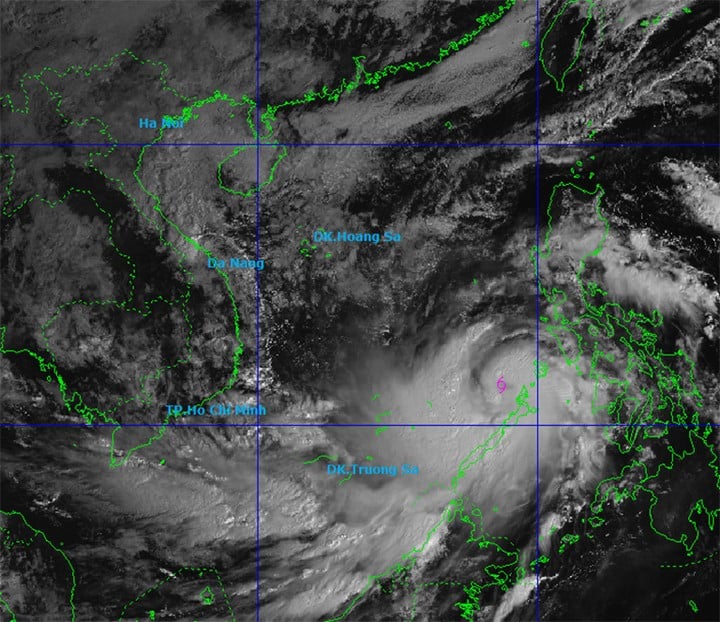
"The storm is very strong, moving quickly, has a wide circulation, operates on the tropical convergence zone, the sea surface temperature is still high, the atmosphere is humid, and the cold air is weakening. Therefore, it is very likely that the storm will continue to strengthen after entering the East Sea." The Department of Hydrometeorology said.
International and Vietnamese forecasts are relatively consistent in terms of trajectory and intensity. The Vietnam Meteorological and Hydrological Administration has discussed forecasts with the Japan Meteorological Agency, the China Meteorological Administration, Taiwan (China), and the Japan Weather News.
Commenting on the upcoming heavy rains, the meteorological agency said that the cold air is weakening, and there are no signs of it strengthening again on November 6-7. During this time, the activity of the east wind zone is not strong (due to the impact of a very strong storm that has just appeared in the East Philippines), so this rain is mainly due to the circulation of storm No. 13.
From November 6-7, Da Nang City to Dak Lak will have very heavy rain, with average rainfall of 200-400mm/period, and in some places over 600mm/period. From South Quang Tri to Hue City, Khanh Hoa and Lam Dong Heavy to very heavy rain, rainfall ranging from 150-300mm/period, locally over 450mm/period. From November 8, heavy rain in these areas tends to decrease.
From November 7-8, from North Quang Tri to Thanh Hoa, there will be moderate to heavy rain with common rainfall of 50-150mm/period, locally very heavy rain over 200mm/period.
Due to the heavy rains caused by storm No. 13 Kalmaegi, rivers from Quang Tri to Khanh Hoa may experience a new flood. In particular, the flood level and inundation on river systems in Hue and Da Nang are likely not as severe as the recent flood.
Accordingly, rivers in Quang Tri such as Gianh River, Thach Han River are above alert level 1, Kien Giang River is above alert level 2. Floods on Bo and Huong Rivers (Hue City) are at alert level 2-3 and above alert level 3.
Water level on Vu Gia - Thu Bon River (Da Nang City) may rise to level 2-3, in some places above level 3; rivers in Quang Ngai such as Tra Khuc, Ve rise to level 2-3 and above level 3; An Lao, Lai Giang River (Gia Lai) rise above level 2, Kon River rise to level 2-3, Se San above level 2; rivers in Dak Lak such as Ba River rise to level 2-3, Ky Lo River rise above level 3, Srepok rise to level 2-3.
Water level on Dinh Ninh Hoa River (Khanh Hoa) rose above BĐ2, Cai Nha Trang rose above BĐ1.
Impact of storm No. 13 Kalmaegi, the central area of the East Sea (including the sea area north of Truong Sa special zone) winds gradually increase to level 7-8, then increase to level 9-11, the area near the storm center has strong level 12-14, gusts of level 17, waves 5-7m high, the area near the storm center has 8-10m high, the sea is very rough. It is necessary to pay attention to the impacts on Truong Sa special zone and marine works.
From early morning on November 6, the sea area from Da Nang City to Khanh Hoa (including Ly Son special zone) gradually increased to level 6-7, then increased to level 8-11, the area near the storm center passed through level 12-14, gusting to level 17. The coastal area from Hue City to Dak Lak had waves 4-6m high, the area near the storm center was 6-8m high, the sea was very rough.
From the evening of November 6, the coast from Hue City to Dak Lak is on guard against sea level rise of 0.3-0.6m, accompanied by big waves and during high tide, which can cause flooding in low-lying areas, waves overflowing dikes, coastal roads, coastal landslides, slowing down flood drainage in the area. All ships, boats, and aquaculture areas in the above-mentioned dangerous areas are strongly affected by storms, whirlwinds, strong winds, big waves and rising sea levels.
From the evening of November 6, on the mainland along the coast from South Quang Tri to Da Nang City, the eastern part of the provinces from Quang Ngai to Dak Lak, the wind will gradually increase to level 6-7, then increase to level 8-9, the area near the storm's center will be level 10-12 (focusing on the eastern part of Quang Ngai-Dak Lak provinces), gusting to level 14-15. The strongest wind will be from the evening of November 6 to the morning of November 7.
In the West of Quang Ngai and Gia Lai provinces, the wind will gradually increase to level 6-7, near the storm's eye it will be level 8, gusting to level 10.
The path and impact of storm No. 13 Kalmaegi are similar to storm No. 12 (Damrey) in 2017 and storm No. 9 (Molave) in 2020. Storm No. 12 Damrey in 2017 made landfall in the provinces of Phu Yen and Khanh Hoa. The storm's intensity when it made landfall was level 9, in Khanh Hoa there were strong gusts of level 12-13, in Gia Lai and Dak Lak (formerly Binh Dinh and Phu Yen), Lam Dong there were strong gusts of level 10-11. The common rainfall in the Hue - Khanh Hoa area is about 150-250mm, Gia Lai - Dak Lak is about 80-150mm. Some places have heavier rain such as: Nam Dong (Hue) 321mm; Tam Ky, Tien Phuoc (Quang Nam) 280mm; Ba To 338mm; Son Giang (Quang Ngai) 382mm; An Nhon 296mm, Quy Nhon (Gia Lai) 295mm; An Khe 266mm; Krong Pa (Gia Lai) 237mm... Storm No. 9 Molave in 2020 made landfall in the Quang Ngai - Da Nang area, with a strong intensity of level 11-12, gusting to level 14. Ly Son Special Zone (Quang Ngai) had strong winds of level 12, gusting to level 13-14. The storm caused heavy rain of 150-400mm in many places from Nghe An to Dak Lak, with some stations measuring over 550mm of rain. | |
Source: https://baolangson.vn/vi-sao-bao-so-13-kalmaegi-con-manh-len-sau-khi-vao-bien-dong-5063966.html







![[Photo] Opening of the 14th Conference of the 13th Party Central Committee](https://vphoto.vietnam.vn/thumb/1200x675/vietnam/resource/IMAGE/2025/11/05/1762310995216_a5-bnd-5742-5255-jpg.webp)


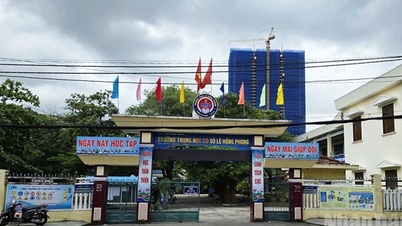





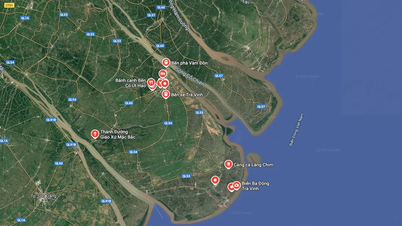





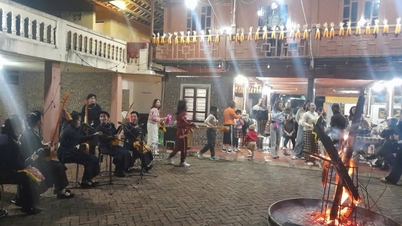


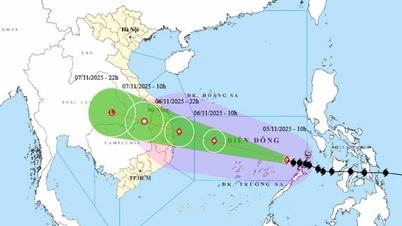

![[Photo] Panorama of the Patriotic Emulation Congress of Nhan Dan Newspaper for the period 2025-2030](https://vphoto.vietnam.vn/thumb/1200x675/vietnam/resource/IMAGE/2025/11/04/1762252775462_ndo_br_dhthiduayeuncbaond-6125-jpg.webp)







































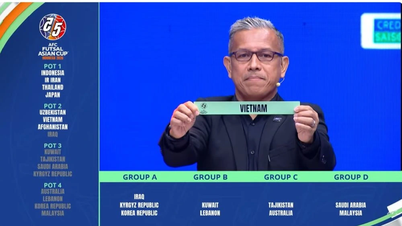








































Comment (0)